Extradural repair
1. General consideration
A bifrontal basal craniotomy after coronal skin incision offers the possibility of inspection of the whole anterior skull base including the two lateral as well as the central portions. Special care should be taken to perform the craniotomies as far basal as possible, even if the frontal sinus has to be opened. Correct management of the frontal sinus is highly recommended to avoid possible postoperative complications, such as mucoceles. This can be accomplished in two ways:
- Complete cranialization of the frontal sinus followed by a careful reliable separation of the paranasal sinus and nasal cavity from the cranial fossa.
- Reconstruction of the frontal sinus can be considered in selected cases. This requires that the nasofrontal duct can drain.
Note: To achieve a real reliable closure of dural defects on the anterior skull base a microscopic intradural inspection as well as microsurgical repair is highly recommended.
2. Approach
For this procedure the coronal approach is used.
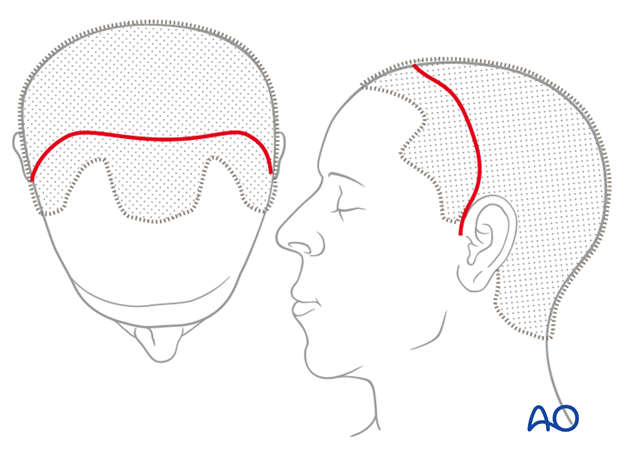
3. Frontobasal repair using pedicled periosteal flap
Localize the exact dura defect.
Separate the dura from the anterior skull base.
In order to have less retraction to the frontal lobes, it is highly recommended to open the frontal sinus.
Use a dissector in order to free the dura from the anterior skull base.
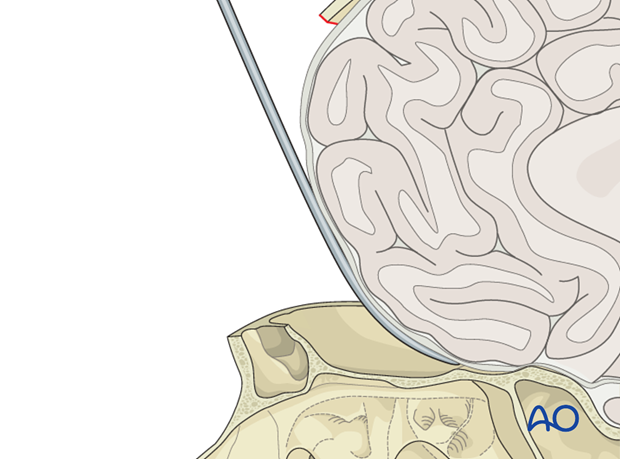
Localize the anterior and posterior ethmoid arteries as they exit the bone.
Dissect the dura around the cribriform plate in order to divide the olfactory nerves.
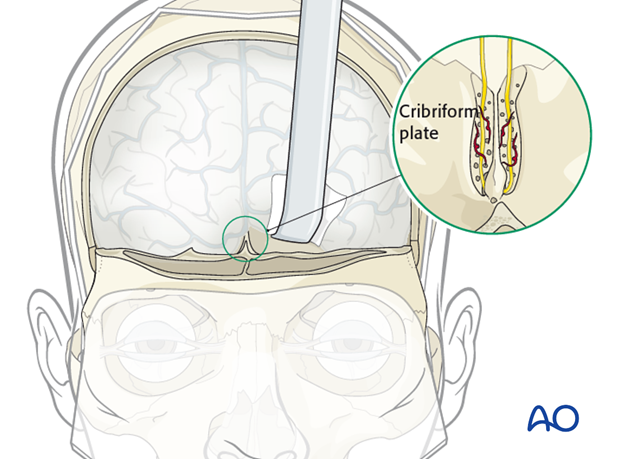
The amount of the posterior dissection will depend on the extent of the fracture. Elevation of the subfrontal dura from the planum sphenoidale can reach as far as the tuberculum sellae and the medial sphenoid ridge. It is possible to retract the frontal lobes away from the anterior skull base using self-retaining retractors on each side.
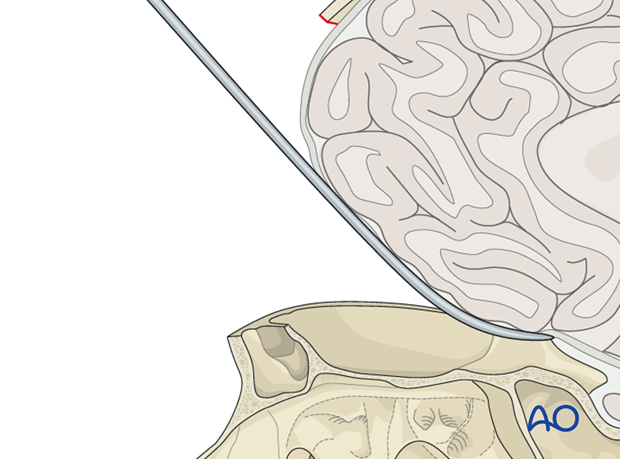
Localize the fracture segments and/or dural defect and remove any loose or displaced bony fragments.
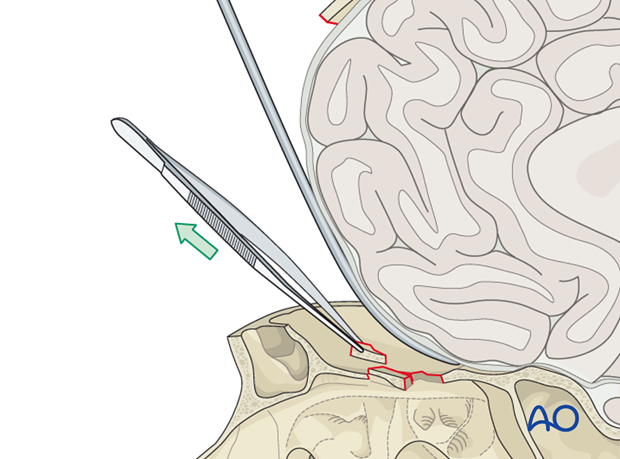
In some cases, it may be sufficient to smooth any sharp edges with a burr.
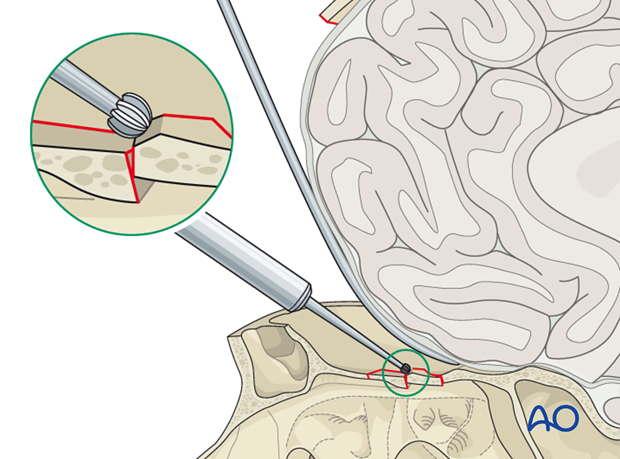
The pericranial flap is brought in and should reline the bone defect of the anterior skull base.
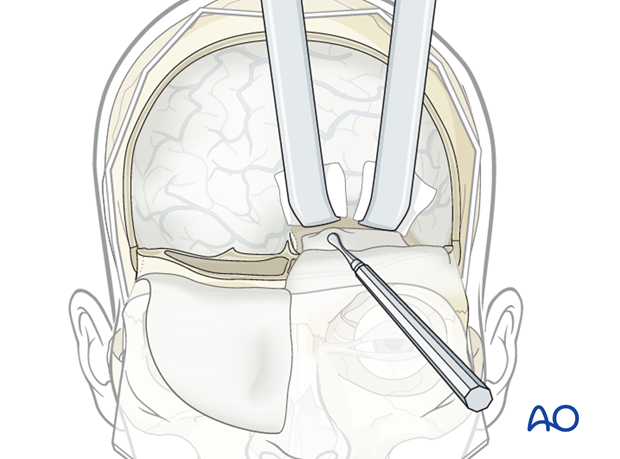
Whenever possible, the pericranial flap should be sutured to the dura.
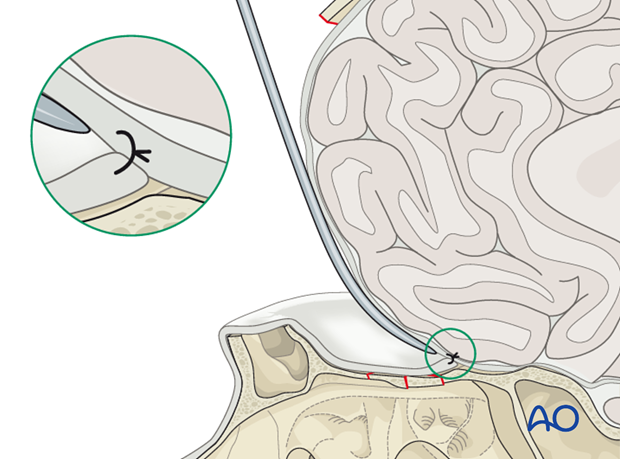
Tacking the dura to the bone flap is highly recommended to avoid possible postoperative epidural hematoma.

Replace the bone flap using internal fixation in a stable three point fixation technique.
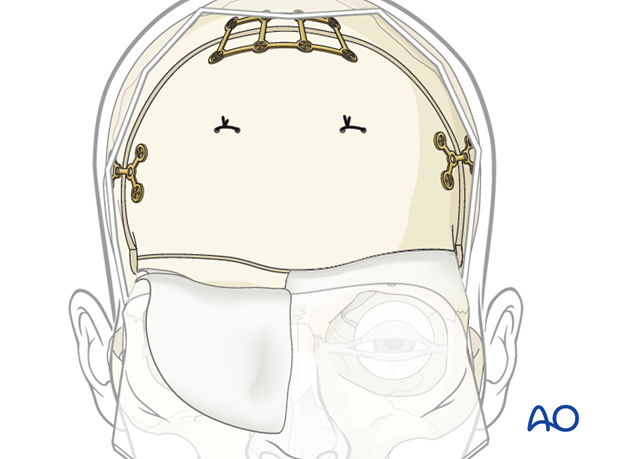
Pearl: reconstruction of the bone defect
Bone substitute putty can be used to fill in the residual bone defects in order to avoid a cosmetic deformity.
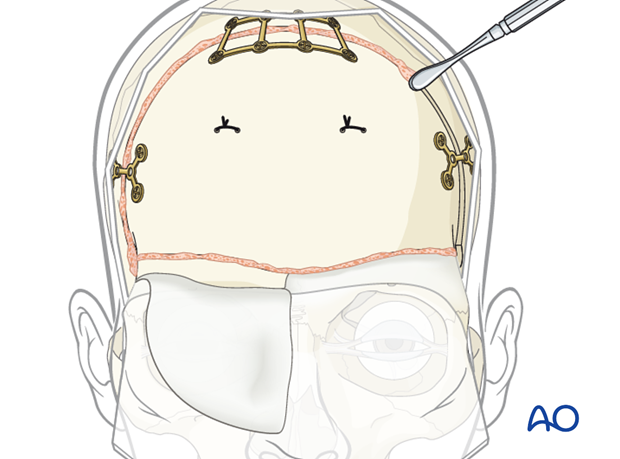
4. Aftercare following open management of skull base fractures
General postoperative care
- Intensive care 24 hours
- Hospitalization 5-8 days (to rule out reoccurrence of CSF leak)
- The use of broad-spectrum antibiotics during and after the procedure for the next 5-7 days is recommended.
- Radiologic control examinations are performed routinely the next day after leaving the intensive care unit.
- Patient follow-up after discharge. The patient is seen 4 weeks after, and if necessary, for the long-term follow-up a year postoperatively.













